Cattle rearing in Africa
Cow rearing, also known as cattle farming, is an important agricultural practice in Africa. It plays a significant role in the economy and livelihoods of many African communities. Here are some key points about cow rearing in Africa:
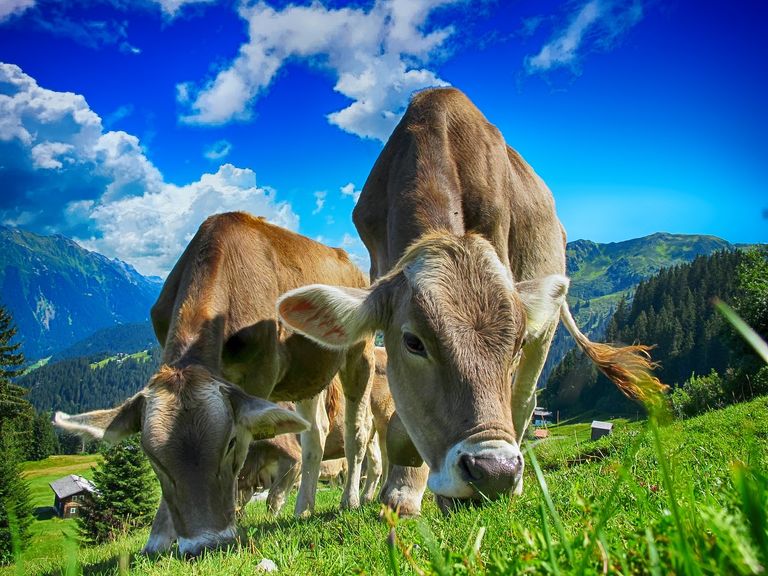
source
Importance of Cattle: Cattle are highly valued in African societies for various reasons. They provide milk, meat, and hides, which are important sources of nutrition, income, and raw materials for local communities. Cattle also serve as a symbol of wealth, social status, and cultural significance.
Breeds: Africa is home to a wide range of cattle breeds, each adapted to specific local conditions such as climate, disease resistance, and grazing patterns. Some popular African cattle breeds include the Nguni in Southern Africa, the Ankole-Watusi in East Africa, and the Boran in East and Central Africa.
Traditional vs. Commercial Farming: Cow rearing in Africa encompasses both traditional and commercial farming systems. Traditional systems involve small-scale subsistence farming, where cattle are raised by individual households for their own consumption and limited surplus for local markets. Commercial farming, on the other hand, involves larger-scale operations aimed at producing beef, milk, or both for wider distribution and profit.
Grazing and Pastoralism: Pastoralism, the practice of moving herds in search of grazing land, is prevalent in many African countries. Nomadic or semi-nomadic pastoralists rely on extensive grazing systems, following seasonal rainfall patterns and utilizing communal or open rangelands. However, with population growth and land fragmentation, some areas are experiencing conflicts between pastoralists and settled farmers over grazing rights and land use.
Challenges: Cow rearing in Africa faces several challenges, including limited access to quality animal healthcare services, inadequate infrastructure, insufficient pastureland, climate change impacts, and frequent outbreaks of livestock diseases such as foot-and-mouth disease, East Coast fever, and tick-borne diseases. Additionally, conflicts with wildlife, such as predation by carnivores, can pose a threat to livestock.
Livestock Development Programs: Governments, international organizations, and NGOs are actively involved in supporting livestock development programs in Africa. These programs aim to improve cattle productivity, enhance breeding practices, provide veterinary services, promote better nutrition and management practices, and develop market linkages for livestock products.
Potential for Growth: The demand for livestock products, such as meat and milk, is increasing in Africa due to population growth, urbanization, and rising incomes. This presents opportunities for cow rearing to contribute to food security, poverty alleviation, and economic development.

source
Africa is a diverse continent with varying environmental, cultural, and economic contexts. Cow rearing practices can differ significantly between regions and countries, reflecting the local conditions and traditions.
Importance of cattle rearing
Cattle rearing holds significant importance in various aspects, including agriculture, economy, food security, and cultural significance. Here are some key points highlighting the importance of cattle rearing:
Food Production: Cattle provide essential food products such as meat and milk. These products are rich in proteins, vitamins, and minerals, contributing to a balanced diet and improving nutrition. Meat from cattle is a valuable source of animal protein, particularly in regions where alternative protein sources are limited. Milk from cows is a nutritious food item consumed as a beverage or used in various dairy products like cheese, butter, and yogurt.
Livelihoods and Income Generation: Cattle rearing plays a crucial role in the livelihoods of many people, particularly in rural areas. It provides a source of income and employment opportunities for small-scale farmers, herders, and pastoral communities. Income can be generated through the sale of livestock, dairy products, hides, and other by-products. This economic activity helps alleviate poverty and improves the living standards of farming communities.
Agricultural Systems: Cattle are an integral part of many agricultural systems. They contribute to sustainable farming practices through their role in nutrient cycling and soil fertility. Cow dung, for instance, can be used as organic fertilizer, enriching the soil with nutrients and improving crop yields. Additionally, cattle can be employed in plowing fields and pulling carts, supporting agricultural activities in regions where mechanization is limited.
Wealth and Social Status: Owning cattle has long been associated with wealth and social status in many cultures. Cattle ownership symbolizes prosperity, and the size of a herd is often seen as an indicator of an individual's or a community's wealth. In certain societies, cattle are used as dowry or bride price, contributing to social and economic exchanges during marriages and other ceremonies.
Cultural Significance: Cattle hold cultural and religious significance in various African societies. They are an integral part of traditional ceremonies, rituals, and cultural practices. Cattle are often used in traditional ceremonies, such as coming-of-age rituals, initiation ceremonies, and festivals, where they play a central role in showcasing cultural heritage and strengthening community bonds.
Sustainable Agriculture and Environmental Benefits: Cattle rearing, when practiced sustainably, can contribute to environmental benefits. Well-managed grazing systems help maintain grasslands, prevent soil erosion, and support biodiversity conservation. Moreover, cattle can be integrated into agroforestry systems, providing benefits like shade, nutrient cycling, and diversification of income streams.
Trade and Economic Growth: Livestock products, including beef, milk, and leather, contribute to both domestic and international trade. Cattle rearing can stimulate economic growth and contribute to a country's GDP through the export of livestock and livestock products. The development of meat processing and dairy industries creates value addition opportunities, generating employment and revenue.
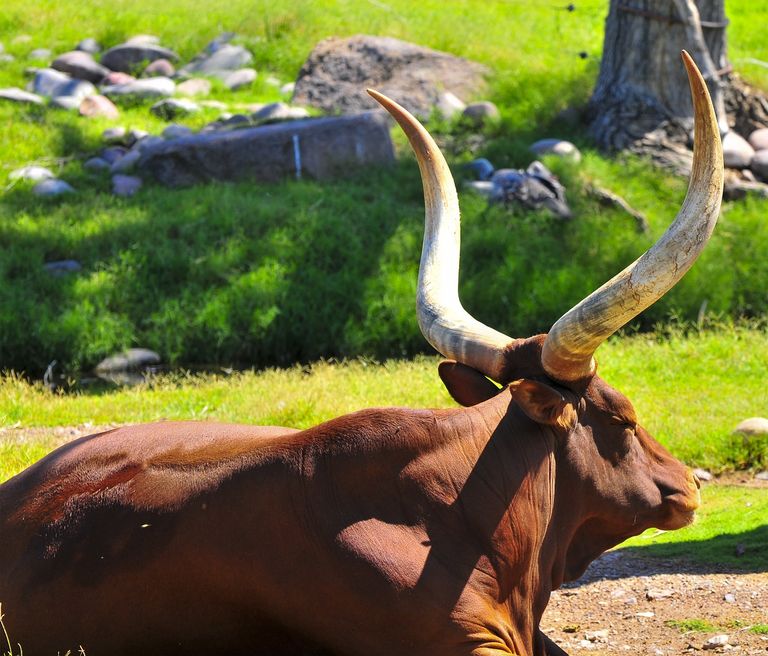
source
The importance of cattle rearing can vary depending on the cultural, economic, and environmental context of different regions.
Cattle rearing in Nigeria
Cattle rearing, particularly in the form of pastoralism, has significant importance in Nigeria. Here are some key points about cattle rearing in Nigeria:
Fulani Herdsmen: The Fulani ethnic group, also known as Fulbe or Fulani herdsmen, are traditionally associated with cattle rearing in Nigeria. They are nomadic or semi-nomadic pastoralists who move their herds across vast distances in search of grazing land and water sources. Fulani herdsmen have a long history of cattle rearing and are known for their expertise in livestock management.
Herd Size and Economic Significance: Nigeria has one of the largest cattle populations in Africa. The herd sizes can range from small-scale operations with a few cows to large-scale herds numbering in the thousands. Cattle rearing contributes significantly to the country's economy, providing income and employment opportunities for many individuals and communities.
Grazing Reserves and Routes: To support cattle rearing, Nigeria has established grazing reserves and designated grazing routes. Grazing reserves are designated areas of land where pastoralists can access grazing land and water sources for their herds. Grazing routes are traditional paths that pastoralists follow, allowing them to move their cattle across different regions.
Conflicts and Security Challenges: Cattle rearing in Nigeria is often associated with conflicts, particularly between herders and farmers. These conflicts arise due to competition for land and resources, encroachment on farmlands, destruction of crops by grazing cattle, and clashes over access to water sources. These conflicts have occasionally escalated into violence, posing security challenges in certain regions.
Milk Production and Consumption: Nigeria has a significant demand for milk, and cattle rearing contributes to milk production in the country. However, milk production levels in Nigeria have historically been lower than the domestic demand, leading to milk imports. Efforts are being made to improve milk production through better breed selection, breeding programs, and increased investment in dairy infrastructure.
Cross-Border Livestock Trade: Nigeria is involved in cross-border livestock trade, particularly with neighboring countries such as Niger, Chad, and Cameroon. Live cattle, as well as meat and other livestock products, are imported and exported to meet the demand and supply requirements in the region. Cross-border livestock trade contributes to regional economic integration and trade cooperation.
Livestock Development Programs: The Nigerian government, in collaboration with international organizations and NGOs, has implemented livestock development programs to enhance the productivity and sustainability of cattle rearing. These programs focus on improving breed quality, veterinary services, fodder production, and capacity building for herders to promote better livestock management practices.
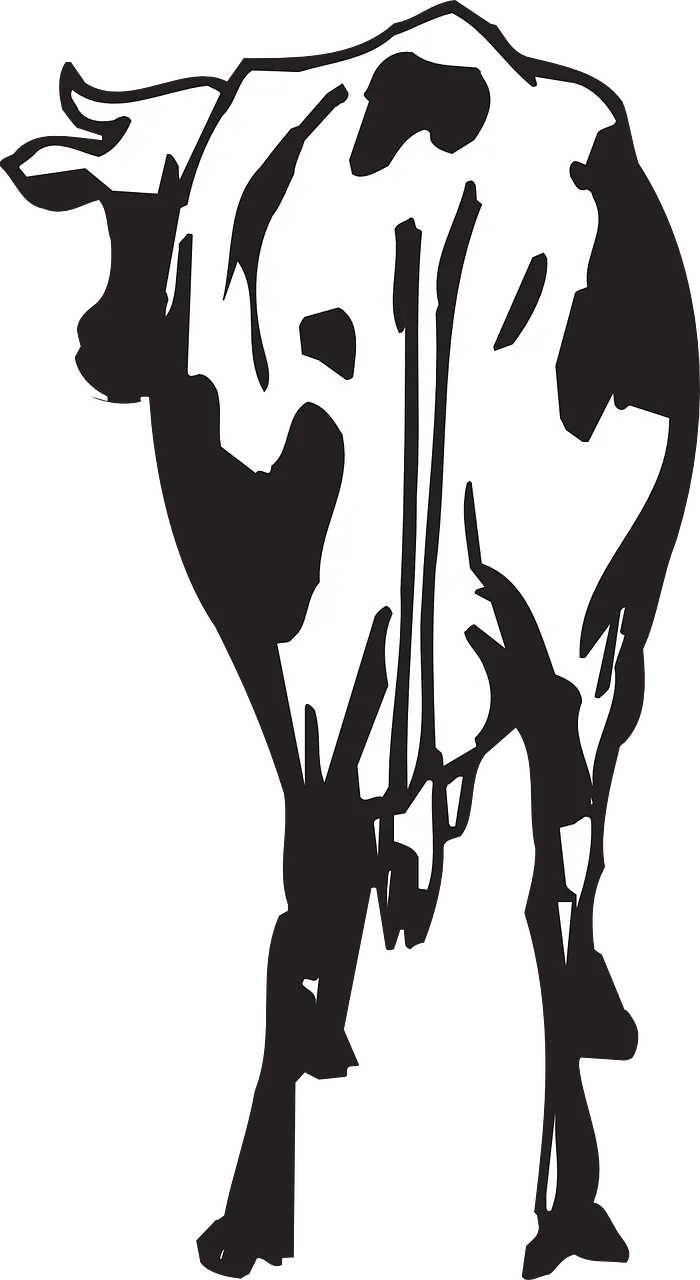
sourceModernization and Commercialization: There is a growing trend of modernization and commercialization in cattle rearing in Nigeria. Some farmers are adopting more intensive and semi-intensive production systems, incorporating improved feeding, breeding, and health management practices. Commercial ranching is also being promoted as a way to enhance productivity, quality, and profitability in the cattle sector.
Livestock Disease Management: Livestock diseases pose a challenge to cattle rearing in Nigeria. Diseases such as foot-and-mouth disease, anthrax, brucellosis, and tick-borne diseases can significantly impact the health and productivity of cattle. The Nigerian government, along with veterinary authorities and international partners, has implemented disease surveillance and control measures to minimize the spread of diseases and ensure the health of the livestock population.
Cattle rearing in Nigeria is influenced by a range of factors, including cultural traditions, economic opportunities, land availability, and social dynamics. Efforts are underway to address the challenges associated with cattle rearing while promoting sustainable and inclusive practices in the sector.
Types of breeds reared in Nigeria
Nigeria is home to various cattle breeds, each adapted to different ecological conditions and serving different purposes. Here are some of the common cattle breeds reared in Nigeria:
Sokoto Gudali: The Sokoto Gudali breed, also known as the Red Bororo, is one of the most prevalent cattle breeds in Nigeria. It is well-suited to the arid and semi-arid regions of the country. The breed has a red coat color, long horns, and is known for its hardiness, adaptability, and resistance to diseases.
White Fulani: The White Fulani, also called Bunaji or Adamawa Gudali, is a popular breed found in Nigeria and other West African countries. It is characterized by its white or light gray coat color, medium-sized body, and long horns. The White Fulani is valued for its milk production, adaptability to diverse environments, and resistance to trypanosomiasis (a livestock disease caused by parasites).
N'Dama: The N'Dama breed originated from West Africa and is well-suited to tropical regions, including parts of Nigeria. It has a compact body, short horns, and a variety of coat colors ranging from light brown to dark red. N'Dama cattle are known for their tolerance to heat, resistance to ticks, and ability to thrive on poor-quality forage.
Keteku: The Keteku breed, also known as Kuri or Sudanese Fulani, is primarily found in the northern regions of Nigeria. It has a light-colored coat, long and lyre-shaped horns, and a medium-sized body. The Keteku breed is valued for its milk production, draught power, and ability to adapt to harsh environments.
Muturu: The Muturu, also referred to as the Nkote or Shuwa, is a smaller-sized cattle breed found in Nigeria. It has a compact body, short horns, and a range of coat colors, including black, brown, or a mixture of both. The Muturu breed is well-adapted to humid and swampy areas, and it is valued for its meat, milk, and ability to tolerate waterlogging.
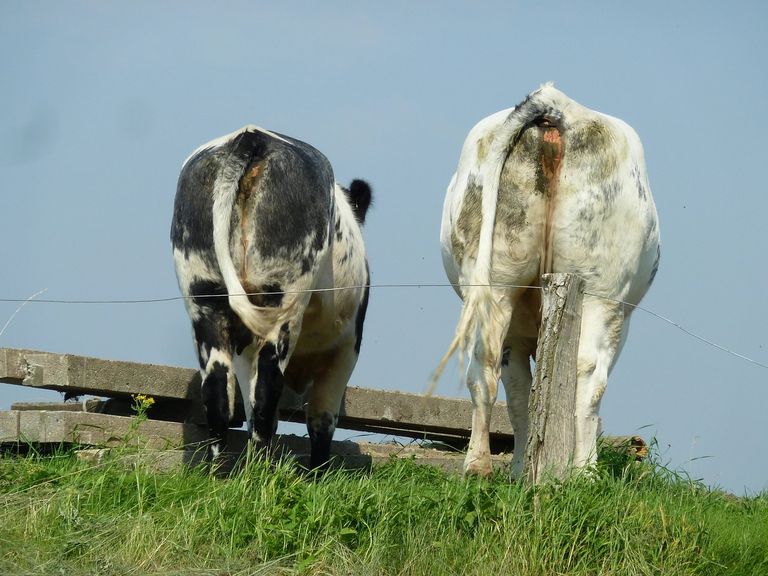
sourceAzawak: The Azawak breed, originating from Niger but also found in northern Nigeria, is a long-legged and slender breed. It has a variety of coat colors, ranging from light brown to reddish-brown. The Azawak cattle are well-adapted to arid and semi-arid regions, known for their endurance, ability to cover long distances, and resistance to drought.
These are just a few examples of the cattle breeds reared in Nigeria. It's worth noting that there may be variations and regional adaptations within these breeds due to local selection pressures and crossbreeding with other breeds.
Traditional vs. Commercial Farming of cattle in Nigeria
Cattle farming in Nigeria encompasses both traditional and commercial farming systems, each with its own characteristics and practices. Here's a comparison between traditional and commercial farming of cattle in Nigeria:
Traditional Farming of Cattle:
- Herd Size: Traditional cattle farming in Nigeria often involves smaller herds, typically managed by individual households or families.
- Grazing System: Pastoralism is a common practice in traditional cattle farming. Herds are moved across vast areas in search of grazing land and water sources, following traditional grazing routes.
- Management: Traditional farmers rely on indigenous knowledge and traditional practices for cattle management, including herd mobility, identification of grazing areas, and utilization of natural resources.
- Breeds: Traditional farming tends to focus on indigenous cattle breeds, such as Sokoto Gudali, White Fulani, N'Dama, Keteku, and Muturu. These breeds are well-adapted to local conditions, including heat, diseases, and limited grazing resources.
- Purpose: Traditional cattle farming often serves subsistence purposes, providing milk, meat, and other by-products for household consumption and limited surplus for local markets. Cattle also hold cultural and social significance in many communities.
- Veterinary Services: Access to veterinary services may be limited in traditional farming systems, relying more on traditional remedies and indigenous knowledge for livestock health management.
- Market Engagement: Traditional farmers may engage in local or regional markets, selling surplus livestock or products such as milk and hides. However, their primary focus is often on meeting the needs of their own households.
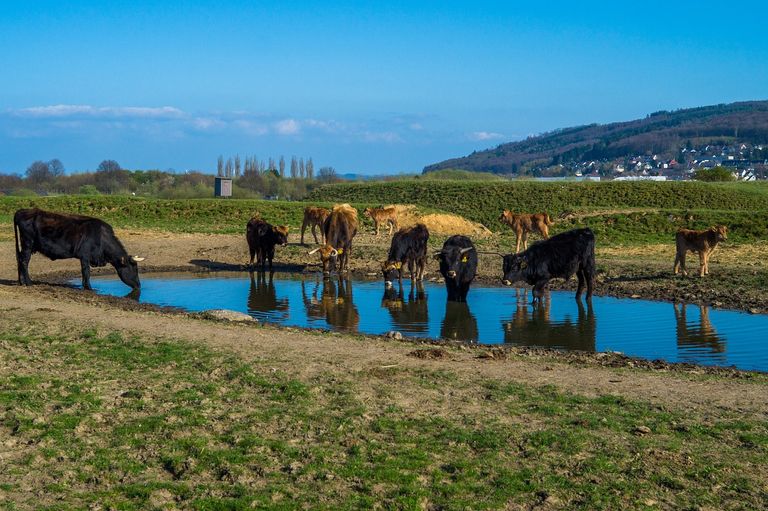
source
Commercial Farming of Cattle:
- Herd Size: Commercial cattle farming in Nigeria involves larger-scale operations with significantly larger herds. These operations are often managed by professional farmers or agribusiness enterprises.
- Ranching System: Commercial farmers may practice ranching, confining cattle to specific areas of land rather than extensive grazing. Ranching allows for better management, controlled feeding, and access to veterinary services.
- Breeds: Commercial farming may involve both indigenous breeds and improved breeds with higher productivity potential, such as exotic dairy breeds or beef breeds.
- Intensification: Commercial farmers employ modern farming techniques and technologies, including improved feeding, breeding programs, and veterinary care to maximize productivity and profitability.
- Purpose: Commercial cattle farming focuses on commercial production of beef, milk, or both. The goal is to generate income and meet the demands of larger markets, including urban centers and export markets.
- Value Chain Integration: Commercial farmers may engage in various stages of the value chain, from breeding and rearing to meat processing, milk production, and distribution. They may collaborate with other actors, such as processors, retailers, and exporters.
- Market Orientation: Commercial farmers have a stronger market orientation, focusing on market demand, quality standards, and value-added products. They may invest in improved infrastructure, technology, and marketing strategies to access wider markets.
There is a continuum between traditional and commercial cattle farming systems, and some farmers may adopt a hybrid approach, incorporating elements of both systems. Additionally, efforts are being made to promote more sustainable and commercially viable practices within traditional farming systems, such as improved animal healthcare services and selective breeding programs.
Challenges faced by cattle rearers in Nigeria
Cattle rearers in Nigeria face several challenges that can impact their livelihoods, productivity, and the overall sustainability of the cattle farming sector. Here are some common challenges faced by cattle rearers in Nigeria:
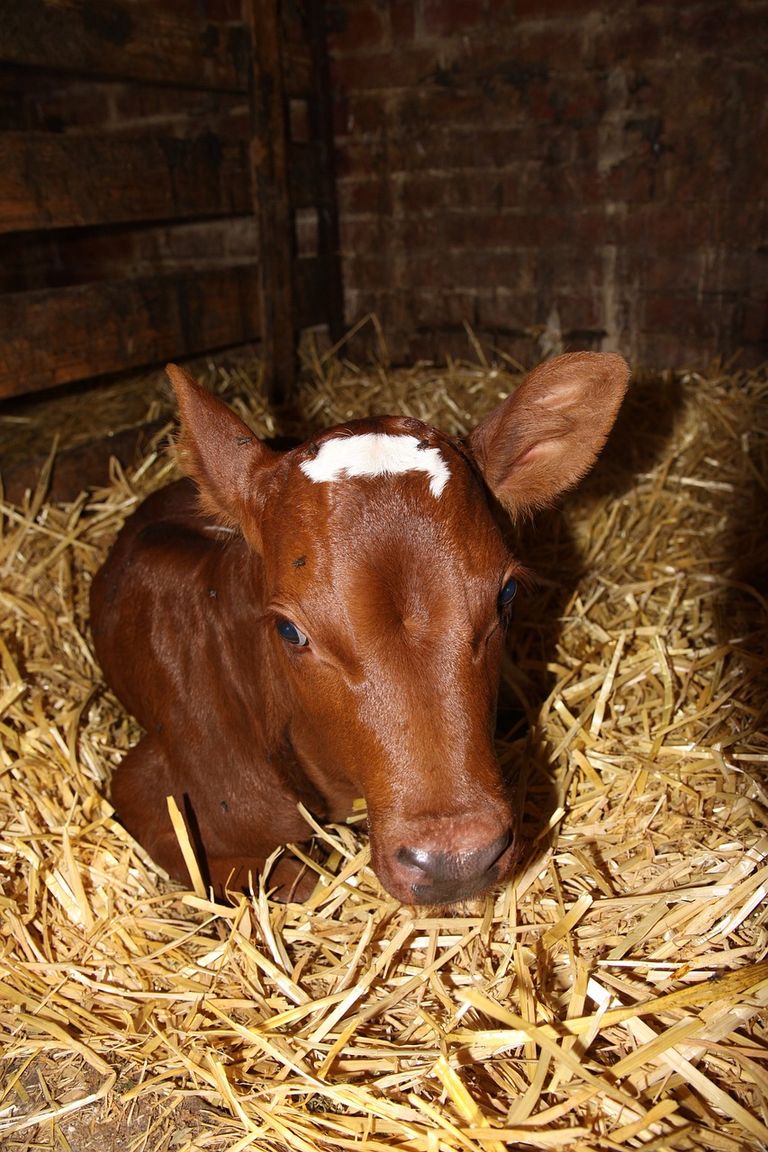
source
Inadequate Grazing Resources: The availability of quality grazing land is a significant challenge. Land degradation, urbanization, encroachment on grazing reserves, and conflicts over land use with farmers limit access to sufficient and nutritious grazing resources for cattle.
Livestock Diseases: Cattle rearers in Nigeria contend with various livestock diseases, including tick-borne diseases, foot-and-mouth disease, brucellosis, and trypanosomiasis. These diseases can cause significant economic losses through reduced productivity, morbidity, and mortality of cattle.
Lack of Veterinary Services: Limited access to quality veterinary services and animal healthcare facilities is a significant challenge. Cattle rearers may face difficulties in accessing timely and appropriate veterinary care, vaccinations, disease diagnosis, and treatment, impacting the health and well-being of their herds.
Insecurity and Herd Theft: Cattle theft and conflicts with criminal elements pose security challenges for cattle rearers. Rustling and banditry activities target livestock, leading to economic losses, violence, and displacement of cattle rearers.
Climate Change and Environmental Pressures: Climate change impacts, such as changing rainfall patterns, droughts, and desertification, affect the availability and quality of grazing lands and water sources. Environmental degradation, deforestation, and land degradation further exacerbate the challenges faced by cattle rearers.
Lack of Infrastructure: Inadequate infrastructure, including water sources, veterinary clinics, market facilities, and transportation networks, hinders efficient cattle production, marketing, and access to inputs and services.
Limited Access to Credit and Finance: Cattle rearers often face challenges in accessing credit and finance for herd improvement, acquiring inputs, investing in infrastructure, and scaling up their operations. This limits their ability to adopt modern practices, improve breeds, and invest in productivity-enhancing technologies.
Conflicts with Farmers: Conflicts between cattle rearers and crop farmers over grazing rights, encroachment on farmlands, and destruction of crops by grazing cattle are common. These conflicts can escalate into violence and pose significant challenges for peaceful coexistence and sustainable livestock-farming practices.
Lack of Extension Services and Technical Support: Limited extension services and technical support restrict the dissemination of best practices, knowledge, and modern technologies to cattle rearers. This hampers their ability to adopt improved breeding, feeding, and management practices that can enhance productivity and profitability.
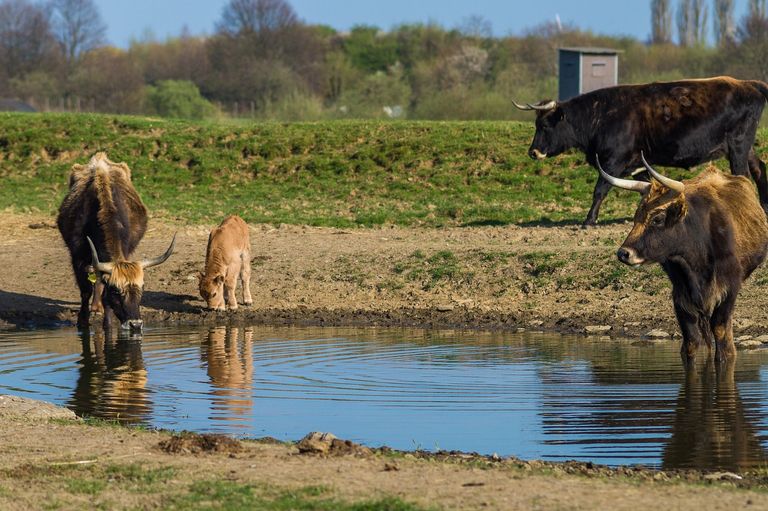
source
Addressing these challenges requires comprehensive strategies and interventions, including investment in infrastructure, improved access to veterinary services, land management practices, capacity building for cattle rearers, and policies that promote sustainable and inclusive cattle farming practices.
States in Nigeria that rears cattle
Cattle rearing is practiced across various states in Nigeria, although some states have a higher concentration of cattle farming activities. Here are some states known for cattle rearing in Nigeria:
Kano: Kano State, located in the northern region of Nigeria, is known for its significant cattle population and vibrant livestock market. The state has favorable ecological conditions and a long history of cattle rearing, with both traditional and commercial farming practices.
Sokoto: Sokoto State, also situated in the northern part of Nigeria, is renowned for its large cattle population. The state has extensive grazing reserves and is home to the Sokoto Gudali breed, which is well-suited to the arid and semi-arid regions.
Katsina: Katsina State is another state in northern Nigeria where cattle rearing is prominent. It has a substantial population of cattle and is known for the White Fulani breed, among others.
Adamawa: Located in northeastern Nigeria, Adamawa State has a significant population of cattle. It is home to the White Fulani breed, which is well-adapted to the region's diverse ecological conditions.
Niger: Niger State, situated in the central part of Nigeria, is known for its substantial cattle population and active livestock markets. The state has a mix of traditional and commercial farming systems.
Zamfara: Zamfara State, located in the northwest, is recognized for its cattle rearing activities. The state has grazing reserves and is home to various indigenous cattle breeds.
Plateau: Plateau State, located in central Nigeria, has a notable cattle population. The state is known for its temperate climate, which is suitable for cattle rearing, and it has both traditional and commercial farming practices.
Bauchi: Bauchi State, situated in northeastern Nigeria, is known for its livestock production, including cattle rearing. The state has grazing lands and a sizable cattle population.
Taraba: Taraba State, located in northeastern Nigeria, has favorable ecological conditions for cattle rearing. It is home to different breeds, and livestock farming is an important economic activity in the state.
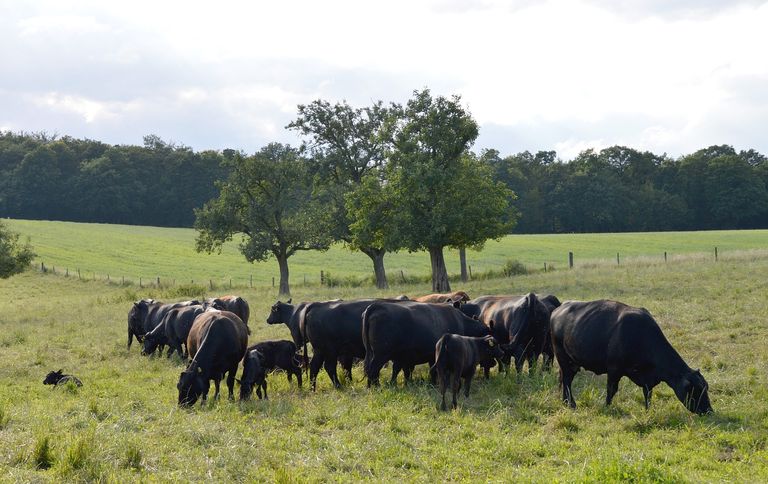
source
Cattle rearing is not limited to these states alone, as cattle farming is practiced in various regions across Nigeria. The concentration and scale of cattle rearing can vary depending on factors such as ecological conditions, cultural traditions, and market dynamics in each state.
The importance of cattle rearing in Nigeria
Cattle rearing holds significant importance in Nigeria, contributing to various aspects of the country's economy, livelihoods, and cultural heritage. Here are some key points highlighting the importance of cattle rearing in Nigeria:
Livelihoods and Employment: Cattle rearing provides a source of livelihood and employment for a significant number of people in Nigeria. It supports both direct employment in livestock farming activities and indirect employment in related sectors, such as veterinary services, transportation, meat processing, and marketing.
Food Security and Nutrition: Cattle rearing contributes to food security in Nigeria by providing a source of animal protein in the form of meat and milk. It helps meet the dietary needs of the population, especially in rural areas where alternative sources of protein may be limited.
Economic Contribution: Cattle farming has a substantial economic impact in Nigeria. It generates income and contributes to the national GDP through various channels, including livestock sales, meat processing, milk production, leather and hides, and export of livestock and related products.
Traditional and Cultural Significance: Cattle hold deep cultural and traditional significance in many Nigerian communities. They are often associated with social status, wealth, and cultural practices, including marriage ceremonies, festivals, and religious rituals. Cattle play a crucial role in preserving cultural heritage and traditional values.
Trade and Livestock Markets: Cattle rearing contributes to domestic and international trade. Livestock markets and fairs provide platforms for buying, selling, and exchanging cattle, creating opportunities for economic transactions and stimulating rural economies. Nigeria also engages in cross-border livestock trade with neighboring countries, contributing to regional trade integration.
Fertilizer and Agricultural Productivity: Cattle play a role in enhancing agricultural productivity through their contribution to the production of organic fertilizer. Cow dung and urine can be used as natural fertilizers, enriching soil fertility and improving crop yields in farming systems where integrated livestock-crop production is practiced.
Social Safety Net: Cattle rearing can act as a social safety net, particularly in rural areas, providing a means of income generation and asset accumulation for households. It offers a buffer against economic shocks, such as crop failures or loss of other livelihood opportunities.
Biodiversity and Ecosystem Services: Cattle rearing, when practiced sustainably, can contribute to the preservation of biodiversity and ecosystem services. Well-managed grazing practices can promote biodiversity conservation, improve soil health, and maintain ecosystem functions in grassland ecosystems.
Tourism and Cultural Heritage: Cattle rearing, with its associated cultural practices, festivals, and traditional cattle breeds, can attract tourists and contribute to cultural tourism. Visitors interested in experiencing Nigerian traditions and cultural heritage may engage in activities related to cattle rearing, such as cattle markets and traditional herding practices.
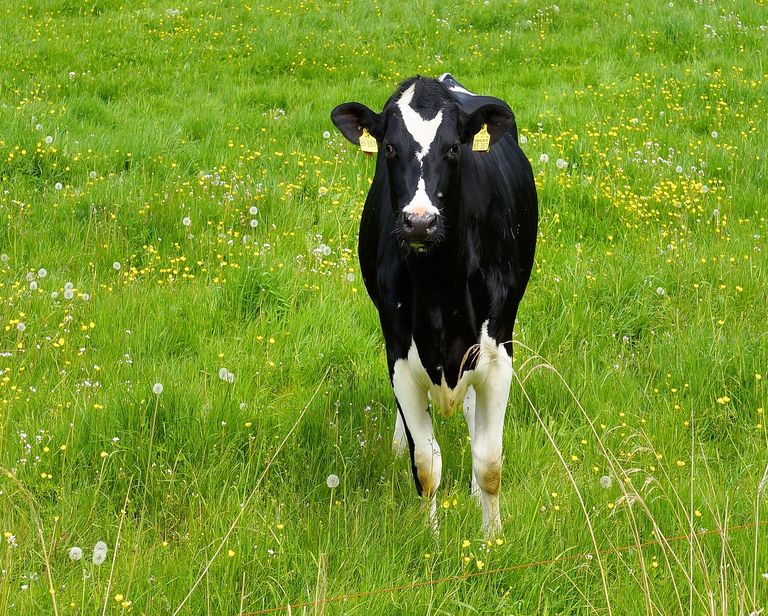
source
Recognizing the importance of cattle rearing, the Nigerian government, along with various stakeholders, has implemented policies and programs to support the sector, including breed improvement, disease control, infrastructure development, and capacity building for livestock farmers.
Different types of produce from cattle in Nigeria
Cattle in Nigeria provide a range of valuable products that contribute to various sectors of the economy. Here are different types of produce derived from cattle:
Meat: Cattle are primarily raised for their meat in Nigeria. Beef production is a significant component of the livestock sector. Cattle are slaughtered and their meat is processed and sold for consumption. Beef is a widely consumed source of animal protein in Nigeria, contributing to the country's food security and nutrition.
Milk: Cows are an important source of milk production in Nigeria. Milk from cattle is consumed both fresh and processed into various dairy products such as yogurt, cheese, butter, and powdered milk. Milk production also supports livelihoods through small-scale dairy enterprises and provides a source of income for dairy farmers.
Hides and Skins: The hides and skins of cattle are valuable by-products of the meat industry. They are processed into leather, which is used in the production of footwear, bags, belts, upholstery, and other leather goods. Leather processing and tanning industries contribute to employment and export earnings.
Bones and Offal: Cattle bones and offal (internal organs) have various uses and applications. Bones can be processed for bone meal, which is used as a source of calcium in animal feed production. Offal, such as liver, kidney, and tripe, is consumed as a delicacy in certain cuisines and can be processed into pet food or used in the production of processed meat products.
Dung: Cattle dung is a valuable organic resource that can be utilized as a source of fuel, fertilizer, and biogas production. Dung can be dried and used as fuel for cooking and heating, especially in rural areas. It also serves as a nutrient-rich organic fertilizer, contributing to soil fertility and crop production.
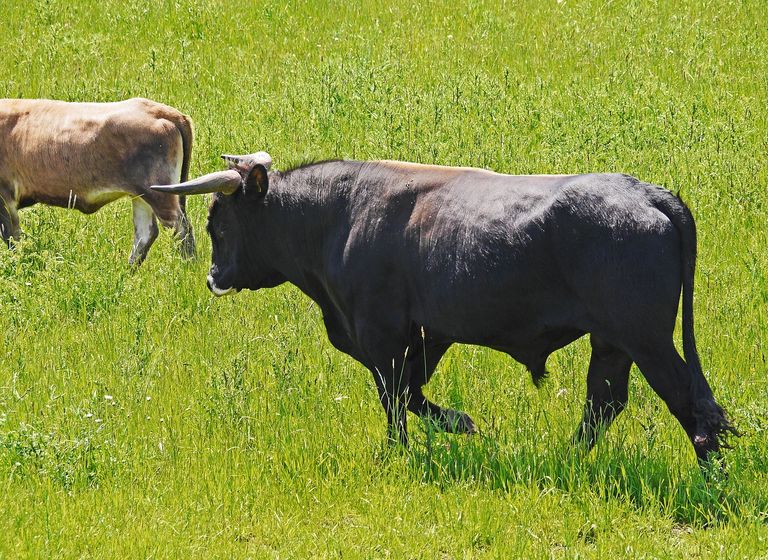
sourceDraught Power: In some areas, cattle are used as draught animals for agricultural purposes. They are used to pull plows, carts, and other farm implements, supporting farm work and transportation of agricultural produce.
These products are derived from different cattle production systems, including traditional and commercial farming, and can vary in availability and utilization depending on the specific context and market demand.
Cow meat consumption rate in Nigeria
Cow meat, or beef, is a popular source of protein in Nigeria, and beef consumption rates in the country are relatively high. However, it is challenging to provide precise figures on the cow meat consumption rate in Nigeria due to various factors, including the country's large population, diverse dietary preferences, and limited data availability.
According to the Food and Agriculture Organization (FAO), Nigeria is one of the top consumers of beef in Africa. The per capita consumption of beef in Nigeria is estimated to range from around 4 to 8 kilograms per year, varying across different regions and socioeconomic groups. Urban areas and wealthier households tend to have higher meat consumption rates compared to rural areas and lower-income households.
It's worth noting that while beef is widely consumed in Nigeria, other sources of protein, such as poultry, fish, and pulses, also play significant roles in the Nigerian diet. Additionally, dietary preferences and consumption patterns can vary among different cultural, ethnic, and religious groups within the country.
Consider that the availability and affordability of beef, as well as cultural and religious factors, can influence meat consumption patterns in Nigeria. Additionally, data on meat consumption rates can be challenging to collect accurately due to informal and unrecorded trade and consumption practices.
The popular Nigerian suya meat
Suya is a popular Nigerian street food made from skewered and grilled meat, typically beef. It is known for its unique and flavorful taste, often characterized by a spicy, tangy, and slightly smoky flavor profile. Suya is commonly enjoyed as a snack or a main course and is widely available in many cities and towns across Nigeria.
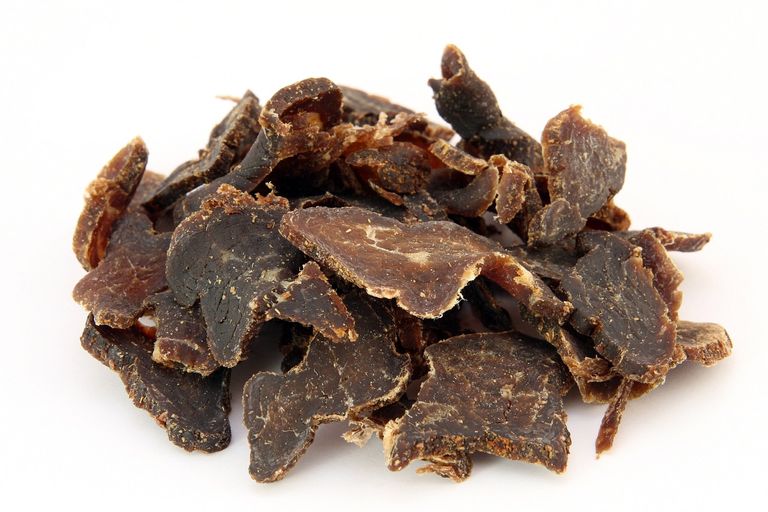
source
Here are some key features of Nigerian suya meat:
Meat Selection: Suya is traditionally made using beef, particularly cuts like sirloin, flank, or strip loin. However, other types of meat, such as chicken, goat, or ram, can also be used to prepare suya, depending on personal preference or regional variations.
Marinade and Spices: The meat for suya is typically marinated in a flavorful spice blend before grilling. The marinade consists of a mixture of ground peanuts (or peanut butter), ground chili peppers, garlic, ginger, onion powder, salt, and other spices. This marinade imparts a distinctive flavor and a reddish-brown color to the meat.
Skewering and Grilling: The marinated meat is then threaded onto skewers, which can be made from metal or wooden sticks. The skewered meat is placed on a hot charcoal grill or open flame, where it is cooked over high heat, imparting a smoky and charred flavor to the meat.
Suya Spice Coating: As the meat grills, it is periodically brushed with the leftover marinade or a mixture of oil and additional spice blend. This step adds more flavor and helps to keep the meat moist during the grilling process.
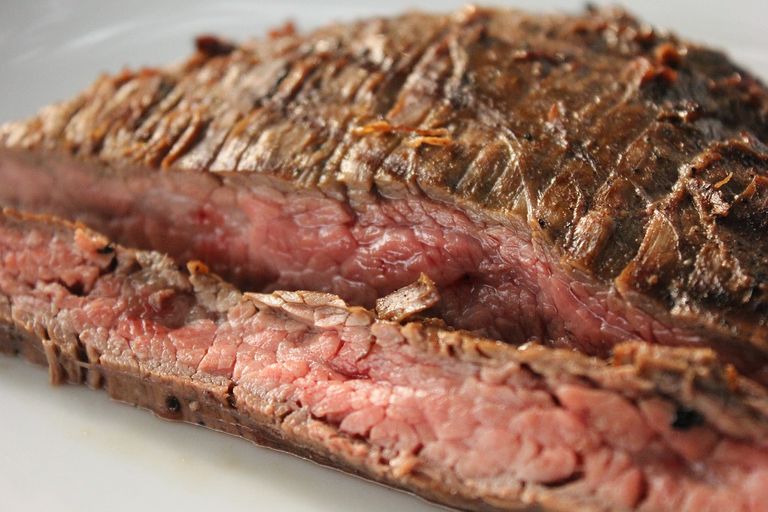
sourceServing and Accompaniments: Once cooked, suya meat is often served hot and garnished with sliced onions and tomatoes. It is typically eaten with a side of sliced fresh vegetables, such as cabbage, lettuce, or cucumber. Suya is commonly enjoyed with a sprinkle of additional suya spice, which can vary in spiciness depending on personal preference.
Suya is not only a popular street food but also a part of social gatherings, celebrations, and events in Nigeria. The delicious flavor, smoky aroma, and combination of spices make suya a well-loved and iconic Nigerian culinary delight.
African countries known for cattle rearing and trading
Cattle rearing and trading are significant agricultural activities in several African countries. Here are some African countries known for their cattle rearing and trading:
Nigeria: Nigeria has a large population of cattle and is known for both traditional and commercial cattle farming. It has a vibrant livestock market and is one of the top beef-consuming countries in Africa.
Sudan: Sudan is one of the largest countries in Africa and has a rich tradition of cattle rearing. It has extensive grazing lands and is known for its cattle breeds, including the Sudanese Fulani and Butana.
Ethiopia: Ethiopia has a long history of cattle rearing and is home to various indigenous cattle breeds, such as the Boran, Arsi, and Horro. The country has a significant cattle population and a strong livestock export market.
Kenya: Kenya has a well-developed livestock sector, and cattle rearing is a prominent agricultural activity. It is known for its Maasai cattle breed and hosts major livestock markets, such as the famous Maasai Mara livestock market.
Tanzania: Tanzania has a diverse livestock sector, with cattle rearing being a major component. It is known for its indigenous cattle breeds, including the Ankole-Watusi and Boran. Tanzania is also involved in regional cattle trade, particularly with neighboring countries like Kenya.
Botswana: Cattle rearing is a crucial economic activity in Botswana. The country has a relatively high cattle density, and livestock farming plays a significant role in the livelihoods of rural communities.
Namibia: Namibia has a sizable cattle population and is known for its extensive ranching practices. The country's beef industry is well-regulated and exports high-quality beef to international markets.

South Africa: South Africa has a well-developed livestock sector, including cattle rearing. It is known for various cattle breeds, such as the Bonsmara and Afrikaner. South Africa has a significant beef production industry and exports beef to several countries.
Zimbabwe: Cattle rearing is an important agricultural activity in Zimbabwe, supporting both subsistence and commercial farming systems. The country has diverse cattle breeds, including the Mashona and Nkone.
Mali: Mali has a long history of nomadic pastoralism and cattle rearing. The country has vast grazing lands and is known for its indigenous cattle breeds, such as the Peulh and Touareg cattle.
These are just a few examples of African countries known for their cattle rearing and trading activities. Cattle farming practices, breeds, and market dynamics can vary across different regions within each country.
Conclusion
Cattle rearing plays a vital role in Africa, and particularly in countries like Nigeria, it holds significant importance for the economy, livelihoods, food security, and cultural heritage. Cattle farming provides a source of income and employment, contributes to the production of meat and milk, and supports trade and market activities.
Traditional and commercial farming practices coexist, with various cattle breeds being reared, each adapted to different ecological conditions. However, cattle rearers face challenges such as inadequate infrastructure, disease outbreaks, and conflicts with farmers.

source
Nonetheless, efforts are being made to address these challenges and promote sustainable cattle rearing practices. Overall, cattle rearing in Africa is a multifaceted sector that contributes to agricultural productivity, rural development, and the preservation of cultural traditions.
Congratulations, your post has been curated by @r2cornell, a curating account for @R2cornell's Discord Community.